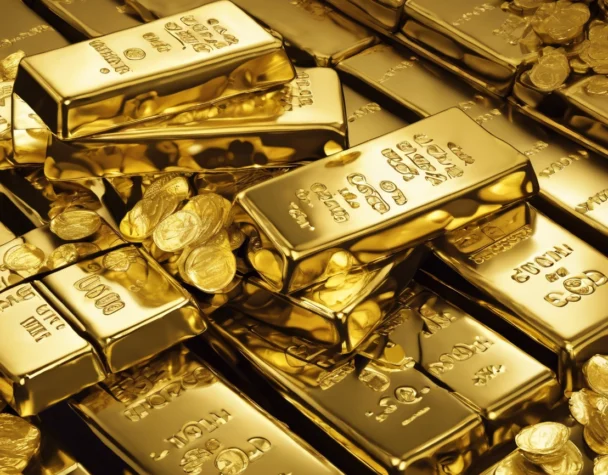
Unveiling the Gold Market's Dance with Global Forces
Thu, March 06, 2025In the complex global theater, gold remains not just a precious metal but a barometer of economic sentiment, an instrument in the hands of policymakers, and a haven for investors during turbulent times. As we journey through the intricate dance of the gold market with global forces, it becomes clear that understanding this relationship is crucial for investors, governments, and observers alike. From geopolitical tensions to shifts in monetary policy, several global forces continuously shape the contours of the gold market.
The Gold Market’s Global Ballet: An Overview
Gold is universally revered not only for its aesthetic allure but also for its economic symbolism and tangible value across civilizations. In the global market, gold’s role is multifaceted, serving as a critical asset in the portfolios of central banks and individual investors alike. Its perceived value can fluctuate based on a myriad of factors ranging from inflation rates to geopolitical stability. As a result, the gold market dances a delicate ballet with global forces, each step reflecting a change in economic environments or shifts in investor sentiment.
The journey of gold prices through history reflects its responsiveness to a global stage fraught with economic dramas and political turmoil. For instance, during times of significant financial uncertainty or when confidence in paper currencies wavers, gold prices typically soar as investors seek safety in its enduring value. Conversely, in periods of robust economic growth and stability, gold can often take a backseat to more lucrative investment opportunities, illustrating its role as a crisis commodity.
This dynamic nature of the gold market makes it a fascinating subject for analysis. The interplay between supply-demand fundamentals, investment flows, and macroeconomic variables creates a complex but structured pattern of movement in gold markets. Analysts watch these movements closely, as they provide insights not only into the health of the economy but also into broader geopolitical trends that are playing out globally.
Economic Currents Shaping Gold’s Value
The price of gold is intricately tied to a variety of economic indicators and policies. Interest rates, particularly those set by major central banks like the U.S. Federal Reserve, play a significant role. Lower interest rates reduce the opportunity cost of holding non-yielding bullion and typically make gold more attractive. Conversely, when interest rates rise, gold, which does not offer interest or dividend returns, can lose its appeal compared to other income-generating assets.
Inflation is another critical economic force influencing gold prices. Traditionally, gold is considered a hedge against inflation. As the cost of living increases, the value of fiat currency can decline, prompting investors to turn to gold as a store of value. This phenomenon was observed vividly during the 1970s oil crisis and the late-2000s financial crisis, moments when inflationary pressures led to a surge in gold investments.
Global economic stability—or the lack thereof—also plays a significant role in determining gold prices. In times of economic uncertainty or when stock markets exhibit volatility, gold’s appeal as a ‘safe haven’ asset spikes. This was evident during the Brexit referendum and the onset of the COVID-19 pandemic, where gold prices saw significant increases. Moreover, trade wars and geopolitical conflicts, such as tensions between the U.S. and China, further compel investors toward the relative safety of gold, underscoring its status as financial insurance against global instability.
As we dissect the intricate dance of the gold market with global forces, it’s evident that gold’s allure and its economic implications are far-reaching. This ballet, performed on a stage of global economic currents, showcases gold not only as a symbol of wealth but also as a strategic asset influenced by an array of international dynamics. For stakeholders ranging from policymakers to private investors, understanding these forces offers not just insight but also a strategic advantage in navigating the ever-volatile realms of global finance. As the world continues to evolve, so too will the dance of gold, ever mirroring the shifting landscapes of our global economic environment.

